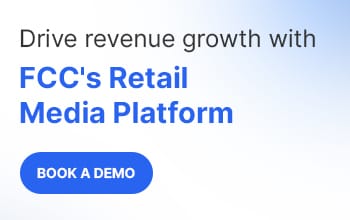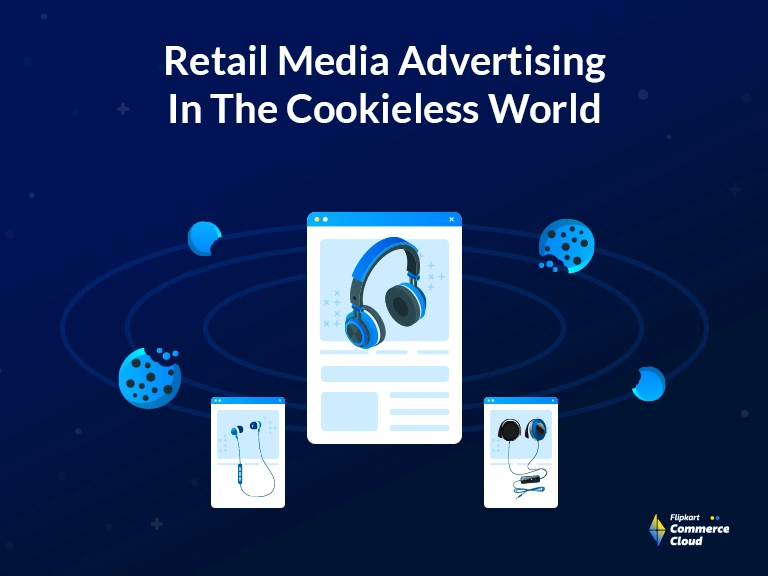
Retail Media For Brands: The Profitable Way To Advertise In A Cookie-less Digital World
By Flipkart Commerce Cloud
Share On:
The world of retail media is undergoing a major shift as big players like Amazon, Walmart, Target, and Kroger compete for a share of the $100 billion annual revenue pot. This trend echoes the transition from traditional to digital media seen in recent years, with a massive advertising budget – $121 billion to be exact – towards retail media. As advertisers pivot between different channels, it’s becoming clear that retail media is not just another option but the future of advertising altogether. In this article, let us dive deeper into the world of retail media.
What is a Cookie in advertising?
In the digital world, a “cookie” is a small piece of data sent from a website and stored on the user’s computer by their web browser. It was designed to help websites remember important information, like items in a shopping cart or browsing history, preferences, and demographic data to create a seamless user experience. Advertisers can access this information to tailor their advertising campaigns specifically to the user’s interests and demographics, increasing the chances of engagement and conversion.
For example, let’s say you recently searched for hiking boots on an online retail website. The website may use cookies to track your activity and then display ads for hiking gear on other websites you visit. This personalized advertising approach aims to provide you with relevant content and increase the likelihood of you making a purchase.
However, the use of cookies has faced criticism due to privacy concerns, more on it in our next section. But before that let’s understand the types of Cookies in retail advertising
Types of cookies in advertising:
First-party cookies
The website sets first-party cookies the user is currently visiting and can be used for a variety of purposes, such as analytics, remembering login details, and storing items in shopping carts. These cookies are considered more user-friendly and compliant with privacy laws since they are set by the domain that the user is actively browsing.
Third-party cookies
Third-party cookies are set by a domain other than the one the user is currently visiting. These cookies are commonly used in advertising, including programmatic advertising, retargeting, and ad tracking. They allow advertisers to track users’ online activity across multiple websites, which can help them target ads more effectively. However, with increasing concerns about privacy and data protection, there have been discussions about replacing third-party cookies with alternative solutions that prioritize user privacy.
The Inevitable Change & its Impact
The use of cookies in advertising has faced criticism due to privacy concerns. Some users feel uncomfortable with the idea of their online activity being tracked and their personal information being used for targeted advertising. In response to these concerns, governments and regulatory bodies have implemented stricter regulations to protect user privacy. In 2018, the General Data Protection Regulation (GDPR) was introduced, setting a new standard for collecting and processing personal information. It prioritizes user rights, transparency, and stricter rules for businesses operating online.
In an effort to increase user privacy, web browsers like Firefox (2019) and Safari (2020) have begun blocking third-party cookies by default. To address this issue, Google has introduced its Privacy Sandbox initiative, which aims to replace third-party cookies with a more privacy-conscious approach. This will allow users to manage their interests and group them into cohorts based on similar browsing patterns.
Apple’s iOS 14.5 update has given users greater control over their privacy settings. With this update, cross-app tracking is restricted, and apps must now request permission to track users and access their device’s advertising identifiers. As many users are expected to opt out of this tracking, app data cannot be shared with other companies for ad-tracking purposes.
The digital landscape is constantly evolving, posing significant challenges for brands. With shifts in audience reach and data availability, creating targeted advertising campaigns and managing them effectively has become complex. Additionally, limitations in access to broad datasets make it harder to personalize ads for specific users. Furthermore, the shorter attribution windows make it difficult to accurately measure and report on campaign performance.
These changes will undoubtedly impact how retailers advertise their products and connect with their target audience. Without the ability to track individual users with cookies, retailers will need to find alternative ways to collect and utilize consumer data for effective ad targeting.
Fortunately, this shift presents an opportunity for retailers to explore new advertising strategies that don’t rely solely on cookies.
Retail Media: The New Dawn
With the phasing out of third-party cookies, retailers are presented with a chance for innovation and growth. One solution emerging in the industry is retail media, which utilizes first-party data to deliver targeted and impactful advertising strategies for businesses.
Another alternative to cookies is contextual advertising, where ads are displayed based on the content of the webpage rather than the user’s browsing history. This approach ensures that ads are relevant to the user’s immediate context, without relying on tracking their online behavior. You can read more about contextual advertising in our blog.
Furthermore, advancements in machine learning and artificial intelligence are enabling retail media platforms to analyze large amounts of data without relying solely on cookies. These technologies can identify patterns and make predictions about user behavior, allowing advertisers to target their campaigns more effectively.
Benefits of retail media for retailers:
- Retailers have a valuable resource at their disposal with first-party data. First-party data is gathered directly from customer interactions and transactions, providing authentic and valuable insights, particularly in the absence of third-party cookies. As the use of cookies becomes less reliable, retailers can leverage this goldmine of information to better understand their customers and make informed business decisions.
- Retail media is unique in its ability to trace the customer’s journey from viewing an ad to making a purchase, also known as “closing the loop.” This allows for closed-loop attribution capabilities, helping retail brands accurately measure and optimize their advertising efforts for maximum ROAS (return on ad spend).
- Retailers can maximize their reach and impact with a dual-channel approach. They can utilize both onsite channels, such as their website and social media pages, to interact with customers in real-time and collect valuable data. Additionally, they can tap into non-owned offsite channels like Facebook or Google to target custom audience segments using their first-party data for effective advertising. By utilizing both types of channels, retailers can create a comprehensive marketing strategy to drive sales and engage customers.
- Retail media offers a two-fold benefit for both endemic and non-endemic advertisers. Endemic advertisers, or brands already selling through the retailer, can take advantage of tailored advertising based on existing sales data. Non-endemic advertisers, on the other hand, can tap into the retailer’s vast data pool to reach their target audience – for example, an apparel brand targeting back-to-school shoppers on a pharmacy website. With real-time insights and targeted advertising capabilities, retail media also enables effective add-on product promotion and retargeting strategies for both types of advertisers.
- In today’s crowded marketplace, third-party browser cookies are becoming outdated due to increased privacy standards. This is where retail media shines as a personalized communication tool for brands to connect with customers. By offering tailored experiences that resonate, retail media helps brands stand out and make an impact.
Retailers stand to benefit greatly from incorporating retail media strategies into their business model. Moreover, with the growing demand for transparency in digital marketing, retail media presents an opportunity for retailers to strengthen their relationships with brands and maintain a competitive edge.
Must Read: What is addressable advertising?
How Retailers Should Prepare for Cookieless World
The digital landscape is evolving, and with the phasing out of third-party cookies, retailers are at a crossroads. To thrive in this new era, they must pivot and adapt, building capabilities that not only address the challenges of a cookieless world but also harness the opportunities it presents.
5 tips for retailers to prepare for the cookieless world:
Adopt Technology to Improve First-Party Data Quality
With third-party cookies no longer available, first-party data has become the gold standard for retailers. To make the most of this valuable resource, retailers must prioritize investing in technology that enhances data collection, analysis and segmentation capabilities. First-party data will serve as the foundation for audience building and personalization, two key elements of effective ad targeting.
Additionally, leveraging loyalty programs can be instrumental in tracking customers over time and across purchase channels to create unified customer profiles and gather rich omnichannel data. Finally, retailers must also stay updated with evolving data privacy regulations like the EU’s General Data Protection Act and the California Consumer Protection Act to ensure compliance while harnessing their valuable first-party data.
Partner with Self-Serve Retail Media Technology
Self-serve retail media technology platforms empower retailers to take control of their advertising campaigns and optimize their ad placements. By leveraging these tools, retailers can set up, monitor, and measure their campaigns in real-time, ensuring maximum ROI and efficiency. This shift towards self-serve platforms puts retailers in the driver’s seat and allows them to adapt quickly to changing consumer demands.
Invest in Improved Analytics Capabilities
The power of data is unlocked through analytics. As such, retailers should prioritize developing sophisticated analytics that go beyond just collecting data. This involves building a flexible offer platform and linking it to advertising delivery platforms in order to accurately attribute sales to various marketing activities. Additionally, closed-loop measurement should be prioritized as it can be a significant differentiator for retail media networks compared to other digital channels.
By investing in advanced analytics capabilities, retailers can gain valuable insights into their ad performance, audience engagement, and identify areas for improvement. This data-driven approach allows retailers to make informed decisions and allocate their advertising budgets more effectively.
Focus on Just-In-Time Personalization with AI/ML Platform
Machine learning has opened up a new frontier for businesses to engage with both known and unknown visitors. By analyzing patterns in user behavior, brands can now provide personalized content that can transform anonymous browsers into loyal customers. Through analyzing large datasets, machine learning algorithms can uncover subtle patterns in consumer behavior that allow retailers to cater to individual preferences and tendencies. One of the key benefits of ML-driven personalization is its ability to engage consumers at the perfect moment with relevant content. This timely engagement helps retailers capture visitors’ attention and turn a brief interaction into a long-lasting customer relationship.
The power of machine learning lies in its adaptive algorithms, meaning it can learn and evolve as consumer behaviors change. This allows for personalized strategies to remain relevant and effective. Implementing feedback mechanisms can help refine personalization efforts, using insights to continuously improve and maximize engagement and conversions for retailers.
Retail media, when paired with machine learning, can greatly improve personalization efforts for brands. This powerful combination allows for hyper-targeted campaigns that truly resonate with the intended audience. This creates a cycle where media initiatives enhance personalization, which then leads to even more effective campaigns. For example, a sunscreen brand could use AI-driven insights to target known beachgoers with customized offers during peak beach seasons, resulting in higher conversion rates.
Build Data Collaboration Partnerships to Increase Audience Reach
Collaboration is essential in the post-cookie era. By forming data collaboration partnerships with complementary businesses and retailers, brands can pool their first-party data to increase their audience reach. This exchange of data allows retailers to tap into a broader audience base while still maintaining data privacy and compliance.
Apart from the above strategies, in the absence of cookies and recent shift towards retail media ads, retailers need to redefine how they measure and attribute ads performance, as discussed below.
Adapt your performance metrics to meet the new demand
In the ever-changing landscape of digital marketing, adaptation is key. With shifting consumer behaviors and a growing number of platforms to consider, marketers must constantly reassess their strategies and redefine what success looks like. Traditional metrics for ad performance are no longer sufficient; to truly stay ahead, marketers must be able to capture the nuances of today’s digital world through new methods of attribution and analysis.
Consider Incrementality
The traditional method of mapping multi-channel marketing to individual customer journeys is becoming less accurate due to the tightening grip of consumer data privacy policies. This is where Incrementality comes in – a new approach that takes into account these limitations and provides more reliable insights for marketers.
The concept of Incrementality revolves around determining the true impact of marketing efforts. Unlike multi-touch attribution, which spreads credit across all touchpoints, Incrementality focuses on identifying and measuring the specific activities that have a tangible influence on outcomes. This approach helps businesses understand the real value of their advertising and distinguish it from organic results. Ultimately, it enables them to make more informed decisions about future marketing strategies.
It is like controlled retail media experiments, where consumers within a particular channel are divided into two groups. The ads are shown to one group of consumers and not to the other. The impact of the advertisements is then measured to see how the ad changed consumer behavior.
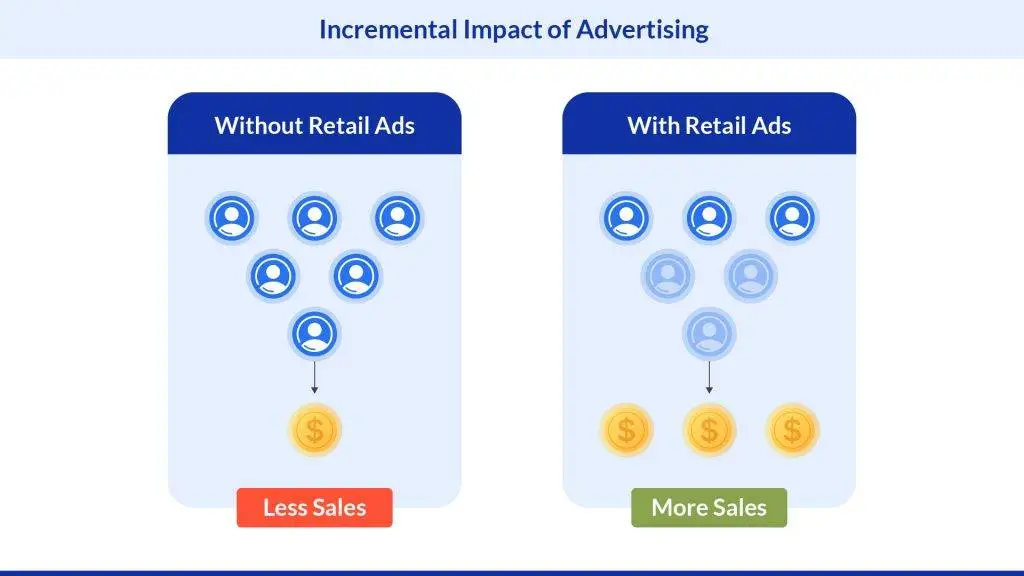
Measure Brand Lift
An ad campaign is not just about clicks and conversions but also about shaping consumer perceptions. Brand Lift measures the direct impact of ads on consumer behaviors and perceptions throughout their journey. This gives insight into how ads can influence metrics such as interest, recall, consideration, and purchase intent.
Brand Lift is a powerful tool for measuring the impact of ads on organic search demand and growth. It goes beyond reach to focus on the quality of engagement, capturing attention and fostering meaningful interactions rather than just passive views. For example, consider the attention your ads are getting, and understanding which communication resonates with your customers will provide you with better insights on making your ads effective.
Focus on Media Mix Modeling
A well-balanced media mix is crucial for a strong advertising strategy. By allocating the marketing budget across multiple channels, businesses can minimize risks and maximize returns. This way, if one channel does not perform as expected, others in the mix can make up for it and maintain a balanced ROI.
Effective marketing strategies require continuous evaluation and optimization. By utilizing analytics, CRM data, and machine learning algorithms, marketers can dynamically allocate budgets to top-performing media and pivot from underperforming channels. This agile approach guarantees that each dollar spent is utilized for maximum impact.
Start your Retail Media Ads with FCC
Flipkart Commerce Cloud (FCC) is transforming the retail industry with innovative solutions. Our comprehensive suite of products is designed to optimize success by prioritizing data and integrating existing technology systems for seamless operations across all channels.
Our expertise in omnichannel pricing allows us to help retailers create a comprehensive pricing strategy that takes into account various factors such as business economics, competition, category dynamics, and consumer demand.
Through our compliant data-driven approach to target audience groups based on behavior and buying intent, our retail media solution helps retailers effectively reach their desired audience. Our self-serve Ads suite offers a complete solution for reaching customers.
FCC’s strategic assortment planning software provides valuable insights into market trends and competition, helping retailers drive profitability and revenue by offering exclusive merchandise.
Stay ahead of the competition both online and offline with our competitive intelligence solutions tailored specifically for retailers across all channels with Flipkart Commerce Cloud.
Talk to our retail media experts on how FCC can help you excel.
More Blogs
See how retailers and brands are winning with FCC
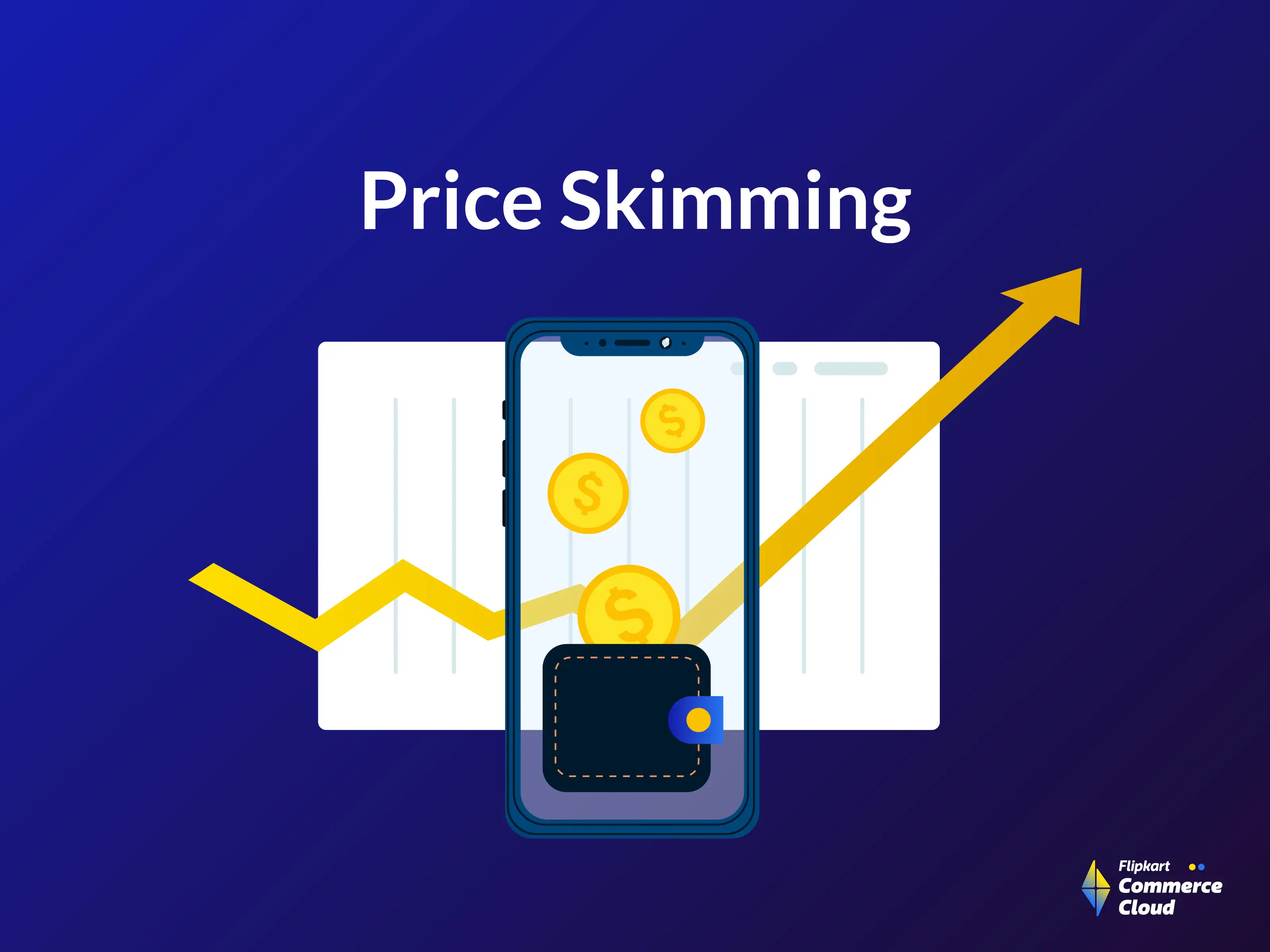
Everything About Price Skimming Strategy Explained
Read More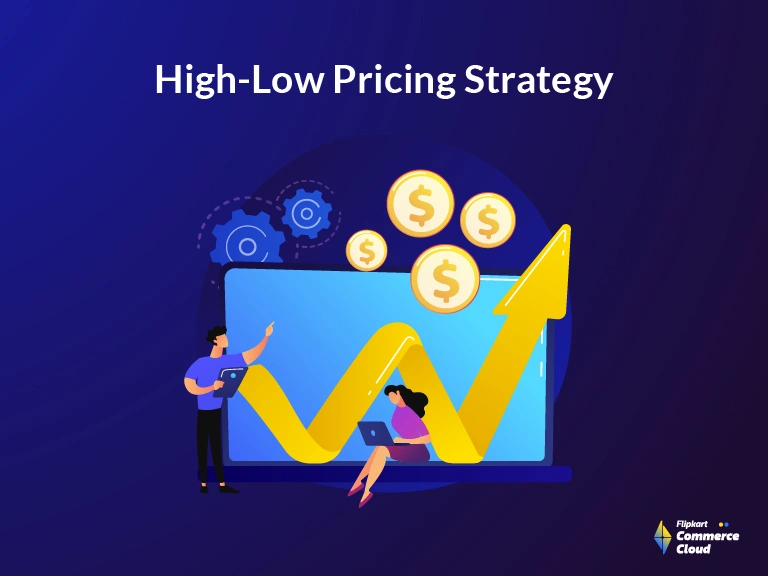
What is a High-Low Pricing Strategy?
Read More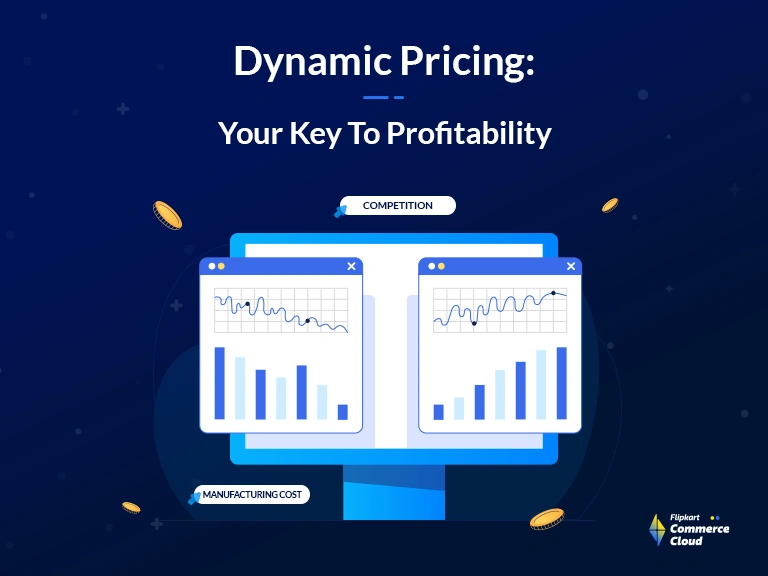
Ultimate Guide To Dynamic Pricing Strategy In 2026
Read More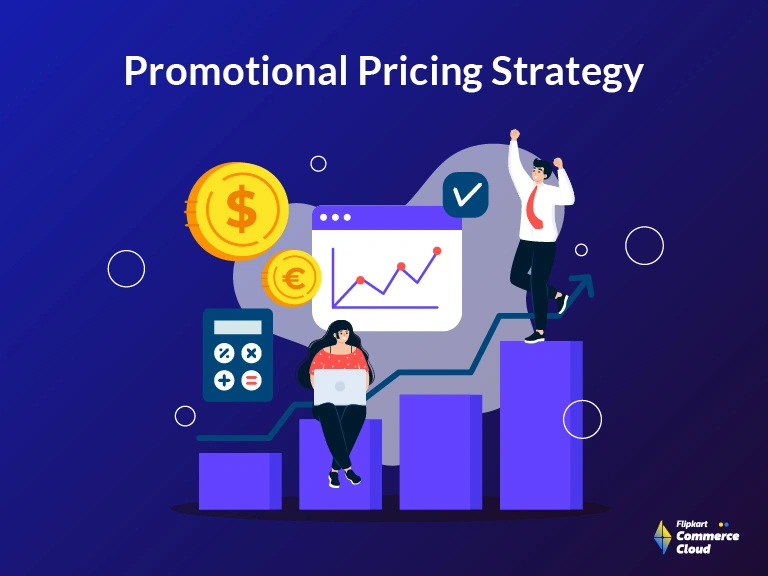
Retail Pricing Strategies: Winning with Promotion Pricing in Competitive Markets
Read More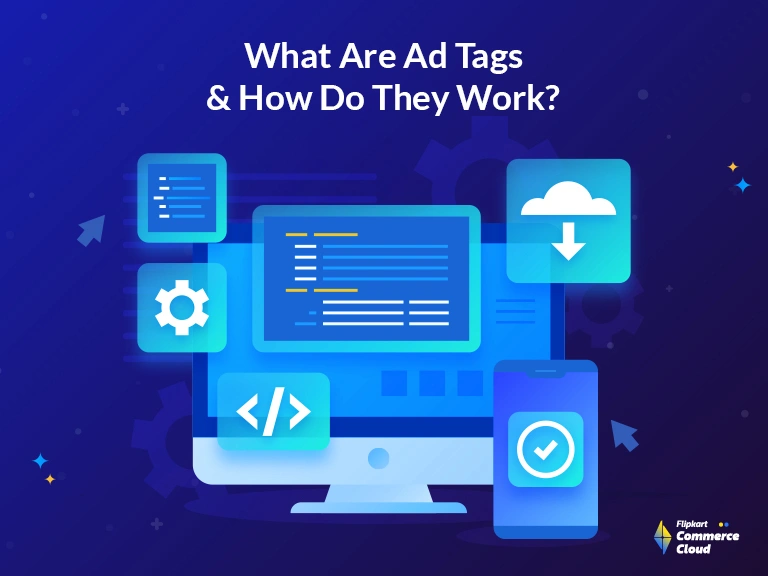
Ad Tags: Enhancing Ad Serving Efficiency in Large-Scale Campaigns
Read MoreTerms and Conditions
Flipkart is committed to protecting and respecting your privacy, and we’ll only use your personal information to administer your account and to provide the products and services you requested from us. From time to time, we would like to contact you about our products and services, as well as other content that may be of interest to you. If you consent to us contacting you for this purpose, please tick below to say how you would like us to contact you:
You can unsubscribe from these communications at any time. For more information on how to unsubscribe, our privacy practices, and how we are committed to protecting and respecting your privacy, please review our Privacy Policy.
By clicking submit below, you consent to allow Flipkart to store and process the personal information submitted above to provide you the content requested.
